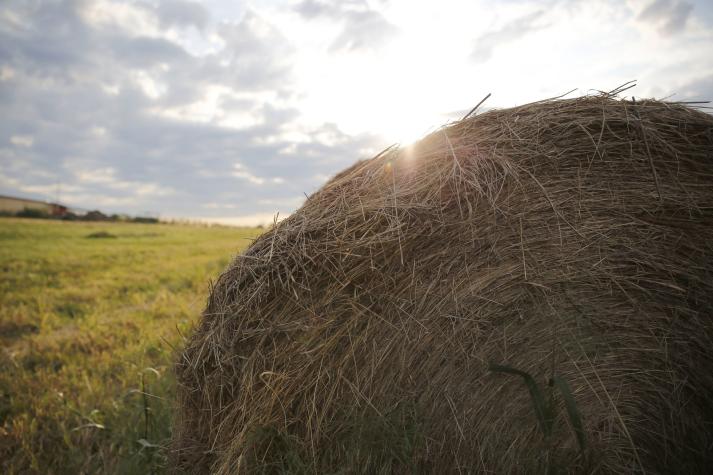State-By-State Hay Summary

Colorado—In the Oct. 17 report, compared to last report, trade activity moderate on light demand. Hay movement picked up some in the dairy and horse hay markets. Small squares of horse hay trending 25 cents/bale higher. According to the NASS Colorado Crop Progress Report for week ending Oct. 13, alfalfa third cutting 98%, fourth cutting 57%. Stored feed supplies were reported as 4% very short, 10% short, 68% adequate, and 18% surplus. Corn harvested for silage is 95%.
Missouri—In the Oct. 17 report, compared to last report, hay prices are steady to weak. The supply of hay is moderate to heavy and demand is light. Missouri crop farmers have had plenty of dry days lately to make more progress on harvest season. After clearing fields, producers have been getting wheat into the ground, with 22% of winter wheat planted and 4% emerged.
Nebraska—In the Oct. 17 report, compared to last report, all reported hay products sold steady. Buyer inquiries picked up this week. Few, alfalfa producers still working on fourth cutting with some on fifth cutting. Very few new crop cornstalk bales being made right now. Some feedlots have switch to alfalfa instead of using cornstalks for a roughage source. One would think with all the bales of feed around the state that farmers wouldn’t bale any cornstalks. But many producers have said getting some of the residue off the field helps with corn production the next year. Red flag warning prevails as hot, dry windy conditions continue to across the state.
Oklahoma—In the Oct. 11 report, compared to the last report, the drought has worsened, and there looks to be no rain in the forecast. Grass has stopped growing and the barns are still full of hay. Even with the drought, the hay trade is at a standstill with some moments of hay only to long-time customers. Next report will be released Oct. 25.
Texas—In the Oct. 18 report, compared to last report, hay prices are mostly steady to weak across all regions. Hay movement and demand remain limited. Warmer than average temperatures throughout September and October have forage and winter wheat producers statewide battling fall armyworms. The majority of the hay put up in that region has been in the utility to fairy category, but some higher quality hay is beginning to hit the stacks now. Next report will be released Nov. 1.
South Dakota—In the Oct. 18 report, compared to last report, demand and movement for all hay has been extremely slower than normal, producers are saying it has been quiet. Most producers are stating corn harvest and what hay that is being sold is going out of state.
New Mexico—In the Oct. 18 report, compared to last week, hay is steady demand is light with not much movement. According to NASS New Mexico Crop progress report Oct. 13, alfalfa hay is in the fifth cutting with 92% complete, sixth cutting 35% complete. Hay and roughage supplies were reported as 17% very short, 40% short, 38% adequate, and 5% surplus, compared with 8% very short, 31% short, 54% adequate, and 7% surplus last week.
Wyoming—In the Oct. 17 report, compared to the last report, movement and demand is light for this time of year all over Wyoming. According to the Wyoming Crop Progress Report, as of Oct. 13 alfalfa third cutting is 72% completed, other hay second cutting is 38% harvested, corn harvested for silage is 90% completed in the state.
Montana—In the Oct. 18 report, compared to last report, hay sold mostly steady. New crop hay continues to see slow, but steady movement. Demand for hay continues to see improvement as ranchers are starting to market their calves. Several sales to ranchers and feedlots were seen this week. Several producers have tests out on third cutting and are waiting to see the results before pricing their hay. Hay supplies in central Montana remain high. Supplies of feeder quality (fair and utility) hay are especially high as both first and second cutting saw delayed cutting and occasional rain showers. Demand from western states are light as prices remain at or lower than where hay is currently priced in Montana. Much of the western and central portions of the state are in the finishing up third cutting, while the eastern and southern portion of the state are finish for the season.



